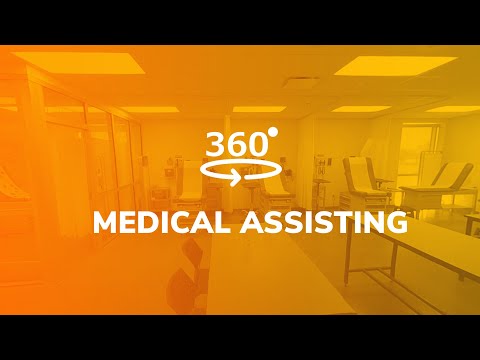What Medical Assistants in the Emergency Room Need to Know
Contents [show]
Medical assistants who work in the emergency room need to have a certain set of skills in order to be successful. Here are a few of the things they need to know!
Checkout this video:
Introduction
Medical assistants who work in emergency rooms (ERs) provide vital support to physicians and other medical staff. They need to be able to keep calm under pressure, work quickly and efficiently, and have a good knowledge of medical procedures and terminology.
ER Medical assistants typically have more responsibilities than those in other medical settings. In addition to performing usual medical assistant duties such as taking patient vital signs and updating medical records they may also be responsible for more invasive procedures such as starting IVs or placing catheters. They may also be responsible for administering medications and other treatments, as directed by a physician.
ER Medical Assistants need to be able to think on their feet and act quickly in order to provide the best possible care for patients. They must also be able to effectively communicate with both patients and staff in often chaotic and stressful situations.
The Emergency Room Environment
The emergency room (ER) can be a hectic place, and medical assistants need to be able to think on their feet and act quickly. ERs are often understaffed and overcrowded, so it’s important to be aware of your surroundings at all times. There may be patients who are experiencing a medical emergency, so you need to be able to identify them and triage them accordingly.
You also need to be aware of the potential for violence in the ER. Patients may become agitated or violent due to their pain, fear, or confusion. It’s important to be able to de-escalate these situations and keep yourself and others safe.
Knowing the layout of the ER is also crucial in an emergency situation. You should familiarize yourself with where the exits are, where the crash cart is located, and where the supplies are stored. This will allow you to act quickly in an emergency situation.
The ER can be a chaotic environment, but medical assistants need to be able to remain calm and focused. By being aware of your surroundings and knowing what to do in an emergency, you can help keep the ER running smoothly.
The Medical Assistant’s Role in the Emergency Room
Medical assistants play a vital role in the emergency room, providing essential support to doctors and nurses. They may be responsible for a variety of tasks, from greeting patients and taking their vital signs to transporting them to different areas of the hospital.
In addition to their clinical duties, medical assistants also play an important role in administrative tasks, such as keeping track of medical supplies and ordering new supplies when needed. They may also be responsible for scheduling appointments and ensuring that patients receive the follow-up care they need.
With so many responsibilities, it’s important for medical assistants to be well-trained and have a strong understanding of emergency room procedures. They should also be able to stay calm under pressure and be able to work quickly and efficiently.
The Medical Assistant’s Responsibilities in the Emergency Room
A medical assistant in the emergency room has a few different responsibilities than those in other departments of a hospital. They need to be able to work well under pressure and have excellent customer service skills. They also need to have a strong knowledge of emergency medical procedures.
Emergency room medical assistants are responsible for greeting patients, checking their vital signs, and taking their medical histories. They also need to be able to take blood and urine samples and perform EKGs and X-rays. In addition, they may be responsible for splinting broken bones and dressing wounds.
Emergency room medical assistants need to be able to work well under pressure and have excellent customer service skills. They also need to have a strong knowledge of emergency medical procedures.
Emergency Room Procedures
As a medical assistant you may be asked to work in the emergency room (ER) from time to time. If you are not familiar with ER procedures, this can be a bit overwhelming. Here is a quick guide to some of the most common procedures you may encounter in the ER.
Code Blue: This is a cardiac or respiratory arrest and is considered a medical emergency. The Code Blue team will consist of a doctor, nurse, respiratory therapist, and sometimes a medical assistant. The medical assistant’s role in a Code Blue situation is to support the team and help with any procedures that need to be done.
intubation: This is a procedure where a tube is inserted through the nose or mouth and into the lungs in order to help with breathing. As a medical assistant, you may be asked to help with intubation by holding the patient’s head, suctioning the mouth or holding instruments.
IV placement: An IV is used to give fluids or medications intravenously (directly into the vein). As a medical assistant, you may be asked to help place an IV by finding a vein, starting the IV, or flushing the line.
Emergency Room Protocols
As a medical assistant, you may be called upon to work in the emergency room at some point in your career. If you are not already familiar with emergency room protocol, it is important to learn the basics before you find yourself in a potentially chaotic and dangerous situation.
The first thing you need to know is that everyone in the emergency room, from the doctors and nurses to the janitorial staff, has a specific role to play. It is important that you know what your role is and that you do not try to take on tasks that are outside of your scope of practice.
Second, you need to be aware of the triage system that is used in most emergency rooms. This system is used to prioritize patients based on the severity of their condition. Patients who are in critical condition will be seen first, followed by those who are less critically ill or injured.
Third, it is important to be aware of the different types of emergencies that may come into the emergency room. Some common examples include heart attacks, strokes, car accidents, gunshot wounds, and drug overdoses. Each type of emergency requires a different level of care and attention.
Fourth, you need to know how to handle hazardous materials. Many times, patients who come into the emergency room are covered in blood or other bodily fluids. It is important that you know how to protect yourself from these fluids and how to properly dispose of them.
Finally, it is important to be calm and collected when working in the emergency room. This can be a very stressful environment and it is important that you do not add to the stress by panicking or losing your cool. If you remain calm and focused, you will be able to better help your patients and yourself.
Emergency Room Documentation
Emergency room documentation is anything but straightforward. In an emergency department (ED), clinicians see a wide variety of patients with a broad range of conditions, and it’s not always easy to predict which patients will require admission to the hospital and which will be discharged home. In addition, many ED patients arrive in unstable condition and their care often changes rapidly throughout their time in the department.
Emergency Room Billing
One of the most important things that medical assistants in the emergency room need to know is how to properly bill for services. This can be a complex process, as there are often multiple insurance companies and reimbursement rates involved. In addition, there may be special circumstances that need to be taken into account, such as whether or not the patient was seen by a physician before being discharged.
It is important to get everything right when billing for emergency room services, as this can impact both the hospital’s bottom line and the patient’s ability to pay their bill. If you have any questions, be sure to ask your supervisor or another member of the billing staff.
The Medical Assistant’s continued Education
The medical field is an ever-changing and complex environment. As a result, medical assistants must continuously update their skills and knowledge to keep up with the latest changes in the field. In addition, medical assistants need to be able to effectively communicate with patients, families, and other medical professionals.
Medical assistants can find continuing education opportunities through many different sources, including:
-Hospitals
-Community colleges
-Online courses
-Professional associations
-Commercial course providers
The Medical Assistant’s Professional Development
The Medical Assistant’s Professional Development
As a medical assistant, you play a vital role in the emergency room. You are the link between the patient and the doctor, and you play an important part in ensuring that the patient receives the best possible care.
You need to be able to think on your feet and act quickly in order to be successful in this role. You also need to have a strong knowledge of medical procedures and be able to communicate effectively with both patients and staff.
In order to be successful, you need to continuously update your skills and knowledge. You also need to be aware of changes in technology and procedures so that you can keep up with the latest developments.
You can update your skills by taking advantage of Continuing Medical Education (CME) courses offered by your hospital or other organizations. These courses will keep you up-to-date on new procedures and treatments. They will also help you brush up on your basic medical knowledge.
Another way to update your skills is to take advantage of online learning resources. There are many websites that offer medical assistant training courses. These courses can help you learn about new procedures and treatments, as well as refresh your knowledge of basic medical concepts.
In addition to updating your skills, you also need to be aware of changes in the medical field so that you can provide the best possible care for your patients. You can stay abreast of changes by reading medical journals or attending conferences and seminars related to emergency medicine.







